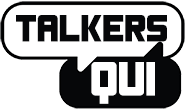Position is a fundamental concept in Poker that experienced players use to their advantage in every hand they play. It refers to a player’s position relative to the dealer button and how it affects their decision-making throughout a hand. Understanding and leveraging position effectively can significantly improve a player’s chances of success at the poker table. A common misconception about position in poker is that it only refers to the physical position of the player at the table.
In actuality, a player’s exact position is not as important as their relative position. The importance of position changes based on how deep-stacked a hand is and whether or not there are other players still in the hand. The deeper you get in a tournament and the more players that remain in a hand, the more important it is to be in a “good” position.
Poker Position – An Overview
Position refers to the relative position of each player at the table. In poker, the position takes into account a player’s location relative to the dealer button, as well as their seating position in relation to other players. The starting point for determining position is the button. There is one dealer button on each table, and it revolves around the table after every hand, moving clockwise after each round of betting. When the button is on a player’s immediate left, that player has a ‘button position’; this means that they make the first decision in every hand by either checking or calling/raising pre-flop, and they get the last action in every round of betting action throughout a hand.
What is the position?
All active players at a Poker rules table have a position. The player with the dealer button has a position on the player directly to their right (who has no position). If there are two players to the right of the dealer, they both have positions on each other. All tacitly acknowledge their relative positions in relation to one another and act accordingly. At any given time, there are only three positions at a poker table. The player to the right of the dealer, also known as “the big blind”, has no position.
Here’s how poker players use their position to their advantage:
Information Advantage: When a player has a leg up in the hand, they have more information than their opponents. This can either be because they are first in the hand (first position) or because they have been better able to examine some aspect of the cards that is not evident to their opponents.
Control of Pot Size: When a player has a slight advantage, they have a decision to make in each round of betting or action. They can either choose to take the action on themselves or wait for others to act first in order to be small.
Second Chance: In tournament situations, the difference between an extra chip and two can be the difference between winning and losing. Understanding how others play from your position and applying information from your current hand can give you an advantage over your opponent.
Value: At certain stages in a hand, it is better to be in position rather than directly behind other players who also happen to be in position. For instance, if a player has a position on an opponent who is representing aces and yet is unable to win an immediate showdown, that player’s position at the table will be valued.
Position is a very important concept in poker. Players who understand that position is relative rather than absolute and how to use that information to their advantage will fare better over the long term at the table. There are many ways to use position at the table, and understanding more about these methods can be useful for players seeking to improve their game when it comes to improving your poker skills. For more useful information on how you can succeed as a player!
Conclusion:
Poker players use their position strategically to gain an advantage over their opponents. Being in a late position provides:
- More information.
- Control over the pot.
- Opportunities for profitable plays like blind steals and well-timed bluffs.
Understanding position and using it effectively is a fundamental aspect of poker strategy that separates skilled players from novices.







You must be logged in to post a comment.